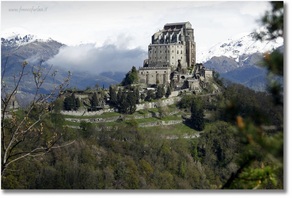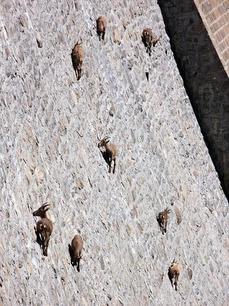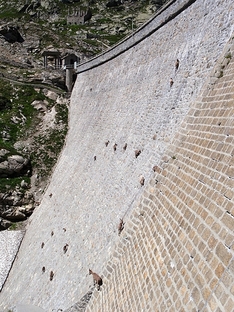The Uniqueness of Piemonte
 Sacra di San Michele
Sacra di San Michele
The Sacra di San Michele, also known as Saint Michael's Abbey, is a religious complex situated on Mount Pirchiriano in the province of Turin. The abbey, for much of its history came under Benedictine rule, is now entrusted to the Rosminians, a Roman Catholic organization. A special regional law, much like that of American historical sites, acknowledges it as the "Symbolic monument of the Piedmont region". The book “The Name of the Rose” by Umberto Ecco was inspired by this monumental abbey.
According to some historians, in Roman times a military stronghold existed on the current location of the abbey. Little is known of the early years of the abbey. The oldest extant account is that of a monk, William, who lived here in the late 11th century. He sets the foundation of the abbey somewhere between 966 – 1003.
What is certain is that what is now the crypt was built in the late 10th century, as attested by the Byzantine influence in the niches, columns and arches. According to legend, this building was constructed by the hermit Saint Giovanni Vincenzo at the behest of the archangel Michael to whom he was particularly devoted; and the building materials which the hermit had collected were transported miraculously to the top of the mountain.
A famous, if macabre, feature is the Tower of Alda the Beautiful. According to legend, the beautiful Alda threw herself from the tower to her certain death, but due to the intercession of angels, miraculously survived. But when others doubted her tale, she recklessly tested the angels with a second leap. This time they let her fall.
According to some historians, in Roman times a military stronghold existed on the current location of the abbey. Little is known of the early years of the abbey. The oldest extant account is that of a monk, William, who lived here in the late 11th century. He sets the foundation of the abbey somewhere between 966 – 1003.
What is certain is that what is now the crypt was built in the late 10th century, as attested by the Byzantine influence in the niches, columns and arches. According to legend, this building was constructed by the hermit Saint Giovanni Vincenzo at the behest of the archangel Michael to whom he was particularly devoted; and the building materials which the hermit had collected were transported miraculously to the top of the mountain.
A famous, if macabre, feature is the Tower of Alda the Beautiful. According to legend, the beautiful Alda threw herself from the tower to her certain death, but due to the intercession of angels, miraculously survived. But when others doubted her tale, she recklessly tested the angels with a second leap. This time they let her fall.



